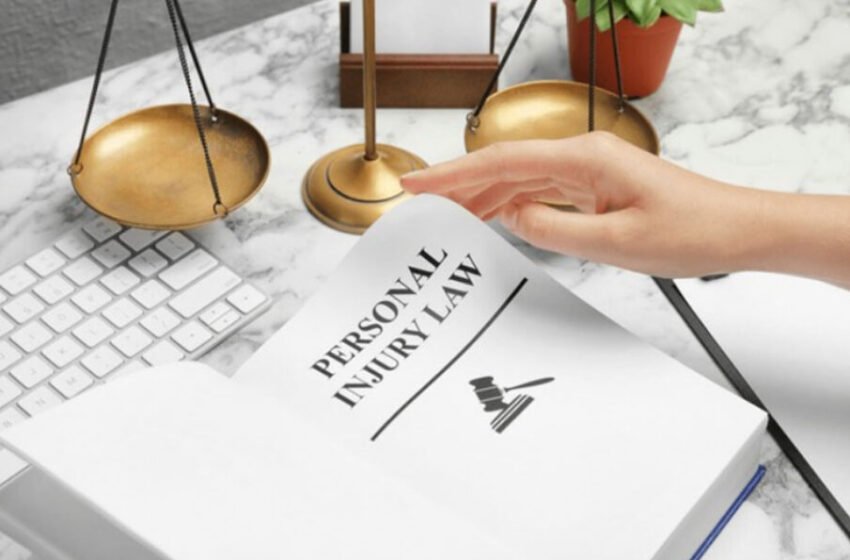How to Prove Negligence in a Personal Injury Case

When you’re injured due to someone else’s carelessness, you may consider filing a personal injury lawsuit for damages. However, to succeed in such a claim, you must prove that the other party was negligent. Understanding how negligence is established can strengthen your case and help you recover the compensation you deserve.
Understanding Negligence
Negligence is the failure to act with reasonable care under specific circumstances. In simple terms, it means someone acted in a way that a reasonable person would not, leading to harm.
For instance, if a driver texts while driving and causes an accident, their lack of attention is considered negligent.
Proving negligence involves showing that the defendant owed you a duty of care, breached that duty, and caused your injuries as a result.
Establishing Duty of Care
The first step is to prove that the defendant owed you a duty of care. Duty of care is a legal obligation requiring individuals to act with a reasonable standard of care to prevent harm to others.
For example, drivers owe a duty of care to others on the road to drive safely. Similarly, store owners owe customers a duty to maintain safe premises free from hazards.
If there was no duty of care, negligence cannot be established, and your claim may not succeed.
Proving Breach of Duty
After establishing duty, you must prove that the defendant breached it. This means showing they failed to act as a reasonable person would under similar circumstances.
In slip and fall cases, for instance, if a store owner knew about a spill but didn’t clean it up in a reasonable time, they breached their duty. In car accident cases, running a red light is a breach of duty as drivers are required to follow traffic laws.
Proving breach of duty often requires evidence like witness statements, surveillance footage, or incident reports.
Demonstrating Causation
Next, you must prove causation – that the defendant’s breach of duty directly caused your injuries. There are two aspects of causation:
- Cause in fact:The injury would not have occurred “but for” the defendant’s actions.
- Proximate cause:The injury was a foreseeable result of the defendant’s actions.
For example, if you slipped on an unmarked wet floor in a grocery store, and there was no other reason for your fall, the store’s negligence is the cause in fact. If it was foreseeable that a wet floor without warning signs could cause someone to slip, this establishes proximate cause.
Showing Damages
Lastly, you must prove that you suffered actual damages due to the defendant’s negligence. Damages can be:
- Medical bills for treatment
- Lost wages if you couldn’t work
- Pain and suffering
- Emotional distress
Without damages, there is no compensation even if negligence is proven. Keeping medical records, receipts, and a journal of your recovery process can support your claim effectively.
Collecting Evidence for Negligence
Strong evidence is crucial in negligence claims. Here are some types of evidence that can help:
- Photographs:Capture your injuries, accident scene, or hazardous conditions.
- Medical records:Show the extent of your injuries and treatments received.
- Witness statements:Bystanders or other parties who saw the incident can confirm what happened.
- Accident reports:Police reports or incident records provide official documentation.
- Expert testimony:In some cases, professionals like accident reconstruction experts may testify to establish causation.
The more evidence you provide, the stronger your case becomes during settlement negotiations or at trial.
Role of Comparative Negligence
In some states, comparative negligence rules apply. This means if you were partially at fault, your compensation may be reduced by your percentage of fault.
For example, if you were found to be 20% at fault in a car accident case, your compensation will be reduced by 20%. In pure comparative negligence states, you can still recover damages even if you were 99% at fault, though the amount is minimal. In modified comparative negligence states, you may be barred from recovery if you are more than 50% or 51% at fault.
Why Legal Representation Matters
Proving negligence requires understanding legal standards and gathering substantial evidence. An experienced personal injury attorney can:
- Investigate your case thoroughly
- Gather and preserve critical evidence
- Consult experts if needed
- Negotiate with insurance companies on your behalf
- Represent you effectively in court
Without proper legal guidance, you may miss important aspects required to prove negligence, reducing your chances of fair compensation.
Final Thoughts
Negligence forms the foundation of most personal injury claims. Establishing duty of care, breach, causation, and damages are essential steps to prove it. With the right evidence and legal support, you can confidently pursue your case and focus on your recovery while your attorney handles the complexities of proving negligence in your personal injury lawsuit.





